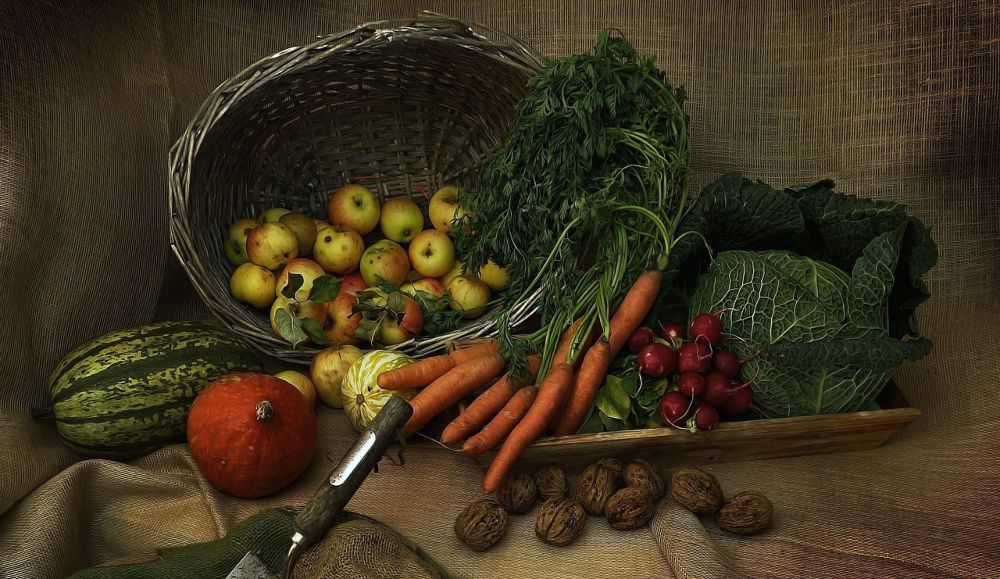Winter is not an easy time to make dinner. Especially in the north. You need intent and invention. Particularly if you are not using meat or bird or fish to hold the stage. You need the vignettes.
Vignettes have always been an essential ally to any good restaurant — they are the setting of the place, they are the allure and the confidence and in many cases the show. The vignettes are the reason people go out to dinner and take a picture of what they are about to eat.
You will need a few things to make your vignettes. A suitable cast, a few props and sauces and some sense of theatrics and relations.
Here is one from the other night, a cold and dark early February. For various reasons, we had sweet winter carrots, a few red potatoes, four small beets, and three small yellow onions. With luck, we had cilantro, chives, thyme, sheep yogurt, and a few hothouse cherry tomatoes. On the counter, it all looked like a disbanded expedition.
The beets were roasted, after a quick rinse, in tin foil, with salt and a little olive oil about them. Leave a little moisture after their rinse, make a tent of the tin foil and roast them for 45 minutes or so at 375, until they are soft. You will smell when they are ready. they need to be soft enough to peel and slice.
Peel the carrots, two or three of each unless they are big, and cut into thumb size. Peel the onions, saving the root end and make some partial cuts down the onions, so they will have sections, still attached at the base. Put it all in a steel bowl, with three peeled garlic cloves, some fresh thyme, a few red pepper flakes and some good olive oil. Toss well.
Heat the oven to 400 degrees and heat a cast iron pan on top for a minute or two. Pour the carrots and onions et al into the frying pan, it should sizzle — get it into the oven. (Do not wash the bowl; potatoes are coming.) After 20 minutes, the onions should have browned a bit, and the carrots too. Now add some butter, a good pinch of salt and pepper and half a cup of stock or water to the pan. Stir carefully, cover tightly and return to the oven for 20 more minutes, until the onions are soft enough to eat. Poke them with a sharp knife. They may need 10 more minutes.
Blanch the red potatoes for ten minutes, drain and put them into the steel bowl. Add salt, some good butter and cut up the potatoes a bit, with a fork, roughing the edges. Heat some olive oil in a small oven proof saute pan and add the potatoes and get that pan into the same oven. The potatoes will need 45 minutes or so to soften and brown, so get moving.
When the beets are soft, and cooled a little, peel them with a paper towel. Slice them on a diagonal and lay the slices on some yogurt, with salt, pepper, chopped chives and the juice from the roasted beets. It is lovely winter colors — the bright green chives, the white yogurt, cracked pepper and the red/yellow hues from the juice. Vignettes.
Pull the onions and carrots out, the liquid should almost be gone. When the potatoes are fully browned, pull them out. On a white plate (you want contrast for winter), lay out a few potatoes, one of the onions, a few carrots. Top with more chives and some chopped dill. Swirl some cold butter in the cast iron pan, use a little heat if needed, and pour that over the top. Colors and winter, roasting and allies. You could put some yogurt, just to the side, or chutney, or marinated onions. Now is the time.
A winter kit of herbs and stems for your vignettes is not expensive: $2 and $3 each, at Frank’s or Sosio’s in Pike Place. They will keep a week and more, and are all of the difference in the winter world. Add fresh chopped basil to a reheated pizza. Add cilantro, chopped with a little garlic, to hot soup. Add chives and basil to slices of feta and then lay all of that on slices of day-old bread that was browned in olive oil. The hothouse cherry tomatoes can be halved, sauted for a minute or so in olive oil and set around any plate. Use good salt and, at the very end, of course, the cracked pepper. Few have travelled further than the cracked pepper.
Speaking of pepper, here is a favorite quote: “Pepper and other exotic spices were like postcards from another world, fragrant proof that there actually was something out there. Imagine holding a peppercorn or a piece of cinnamon for the first time! Pepper was a seed that planted the idea of the earth being a bigger place. While salt was the first regular commodity, pepper was the first global commodity — a luxury of cultural importance. Pepper made the world expand.” (From Dinner in Rome, 2022, Viestad, Reaktion Books)
Discover more from Post Alley
Subscribe to get the latest posts sent to your email.
